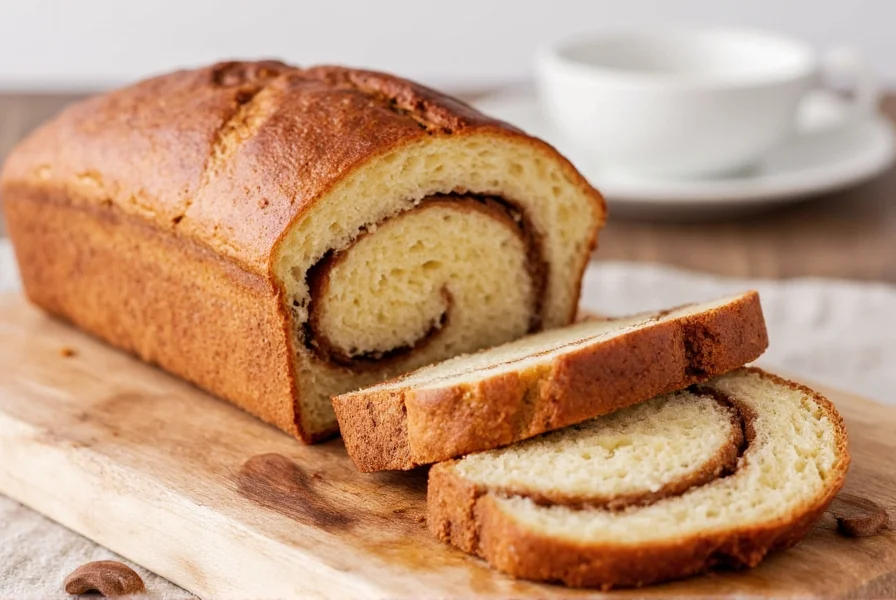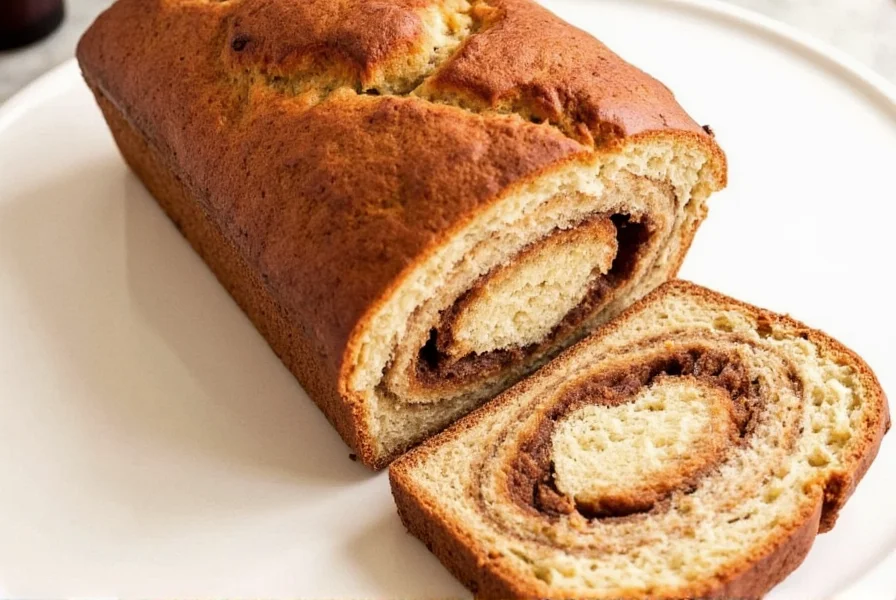The Essential Elements of Exceptional Cinnamon Swirl Bread
Creating bakery-quality cinnamon swirl bread at home requires understanding three critical components: dough structure, filling composition, and baking technique. Unlike basic quick breads, authentic cinnamon swirl bread uses a yeast-leavened enriched dough containing milk, butter, and eggs. This creates the characteristic soft, slightly elastic crumb that properly supports the cinnamon filling without collapsing.
Professional bakers emphasize dough hydration as the make-or-break factor. A hydration level between 70-75% provides enough moisture for tenderness while maintaining structure to hold the swirl pattern. Too dry, and the bread becomes crumbly; too wet, and the filling leaks during baking. The ideal dough should feel smooth and slightly tacky but not stick aggressively to clean fingers.
Mastering the Cinnamon Filling Formula
The perfect cinnamon swirl bread filling balances sweetness, spice, and texture. Many home bakers make the mistake of using only cinnamon and sugar, which often leads to leakage or a gritty texture. The professional approach incorporates:
- Equal parts granulated sugar and light brown sugar for complex sweetness
- High-quality Saigon cinnamon (1.5x stronger than regular cinnamon)
- 1-2 tablespoons melted butter per cup of sugar mixture
- 1-2 teaspoons all-purpose flour to absorb moisture
| Common Filling Problems | Causes | Solutions |
|---|---|---|
| Filling leakage | Excess moisture, too much filling, dough too thin | Add 1-2 tsp flour to filling, use 1/4 cup filling per loaf, roll dough to 1/4" thickness |
| Indistinct swirls | Dough too cold, improper rolling technique | Let dough rest 5 minutes before rolling, use bench scraper to lift edges |
| Bitter cinnamon taste | Low-quality cinnamon, too much cinnamon | Use Saigon cinnamon, limit to 2 tbsp per loaf |
Step-by-Step Cinnamon Swirl Bread Recipe
Follow this tested method for reliable results every time. This homemade cinnamon swirl bread recipe produces two standard loaves with perfectly defined spirals.
Dough Ingredients
- 3 1/2 cups (440g) bread flour
- 1/4 cup (50g) granulated sugar
- 2 1/4 tsp active dry yeast (1 packet)
- 1 cup (240ml) warm whole milk (105-110°F)
- 1 large egg, room temperature
- 1/4 cup (57g) unsalted butter, melted
- 1 tsp salt
Cinnamon Filling
- 1/2 cup (100g) granulated sugar
- 1/2 cup (100g) light brown sugar, packed
- 2 tbsp Saigon cinnamon
- 2 tbsp all-purpose flour
- 3 tbsp melted butter
Preparation Process
- Mix dough: Combine flour, sugar, and yeast in stand mixer. Heat milk to 105-110°F, add to dry ingredients with egg and melted butter. Mix with dough hook 5-7 minutes until smooth and elastic.
- First rise: Place dough in greased bowl, cover, and let rise at room temperature (72-75°F) for 1-1.5 hours until doubled.
- Prepare filling: Whisk sugars, cinnamon, and flour. Stir in melted butter to create a thick paste.
- Shape loaves: Roll risen dough into 16x12 inch rectangle. Spread filling evenly, leaving 1/2 inch border. Roll tightly from long side, pinch seam closed.
- Second rise: Place seam-side down in greased loaf pans. Cover and rise 45-60 minutes until dough crowns 1 inch above pan rims.
- Bake: Preheat oven to 350°F. Bake 30-35 minutes until internal temperature reaches 190°F. Cool in pans 10 minutes, then transfer to wire rack.

Troubleshooting Common Cinnamon Swirl Bread Problems
Even experienced bakers encounter issues with cinnamon swirl bread troubleshooting. Understanding these common problems ensures consistent results:
Swirl Pattern Disappears During Baking
This typically happens when the dough hasn't developed sufficient gluten structure. Solution: Knead dough until it passes the windowpane test (stretches thin without tearing). Allow full first rise time - rushing this step compromises dough strength.
Filling Leaks Out During Baking
Excess moisture in the filling is the primary culprit. Professional bakers add 1-2 teaspoons of flour to the filling mixture to absorb moisture. Also ensure you're not overfilling - 1/4 cup filling per standard loaf pan is sufficient.
Dense or Gummy Crumb
This indicates underbaking or inaccurate temperature measurement. Always use an instant-read thermometer to verify internal temperature reaches 190°F. Resist the urge to open the oven during the first 20 minutes of baking, as temperature fluctuations affect rise.
Delicious Variations to Try
Once you've mastered the perfect cinnamon roll bread technique, experiment with these popular variations:
- Nutty Swirl: Add 1/2 cup finely chopped pecans or walnuts to the filling
- Cream Cheese Swirl: Spread 4 oz softened cream cheese before adding cinnamon mixture
- Apple Cinnamon: Layer 1/2 cup finely diced apples (tossed with 1 tsp lemon juice) with filling
- Chocolate Cinnamon: Sprinkle 1/3 cup mini chocolate chips over filling before rolling
Proper Storage and Serving Techniques
Enjoy your soft cinnamon swirl loaf at peak quality by following these storage guidelines:
- Room temperature: Store in airtight container for up to 3 days. Place parchment between slices to prevent sticking.
- Freezing: Wrap cooled loaf tightly in plastic wrap, then foil. Freeze up to 3 months. Thaw at room temperature.
- Reheating: For best results, warm individual slices in toaster oven at 300°F for 3-4 minutes.
Serve cinnamon swirl bread slightly warm with softened butter or a simple glaze (1 cup powdered sugar + 2 tbsp milk + 1/2 tsp vanilla). For an elegant presentation, cut with a serrated knife using gentle sawing motion to preserve the swirl pattern.
Frequently Asked Questions
Can I make cinnamon swirl bread without yeast?
Yes, you can create a quick bread version using baking powder and baking soda as leaveners. However, the texture will differ significantly from traditional yeast-raised cinnamon swirl bread. Yeast provides the characteristic airy crumb and subtle flavor complexity that chemical leaveners cannot replicate. For authentic results, yeast is essential.
Why does my cinnamon swirl bread collapse after baking?
Collapse typically occurs when the bread is underbaked or removed from the pan too soon. The structure needs sufficient time to set - ensure internal temperature reaches 190°F before removing from oven. Let bread cool in pans for 10-15 minutes to allow continued setting before transferring to a cooling rack. Avoid opening the oven during the first 20 minutes of baking, as temperature fluctuations can cause collapse.
How can I prevent the cinnamon filling from sinking to the bottom?
To prevent filling separation, ensure your dough has proper tension when rolling. Roll the dough rectangle evenly to 1/4 inch thickness, spread filling uniformly while leaving a small border, then roll tightly from the long side. Pinch the seam firmly to seal. Chilling the shaped loaves for 15 minutes before the final rise helps the filling set and prevents sinking during baking.
What's the best type of cinnamon for cinnamon swirl bread?
Saigon cinnamon (also called Vietnamese cinnamon) provides the most intense, complex flavor with less bitterness than regular supermarket cinnamon. It contains higher levels of cinnamaldehyde, the compound responsible for cinnamon's distinctive flavor. Use 2 tablespoons per loaf for optimal flavor without overwhelming bitterness. Avoid "cinnamon blend" products which often contain fillers that dilute flavor.
Can I prepare cinnamon swirl bread dough ahead of time?
Yes, you can refrigerate the shaped loaves after the initial shaping. Place them in greased pans, cover tightly, and refrigerate for up to 18 hours. When ready to bake, remove from refrigerator and allow to complete the final rise at room temperature (about 2 hours). This slow fermentation enhances flavor development while providing scheduling flexibility.











 浙公网安备
33010002000092号
浙公网安备
33010002000092号 浙B2-20120091-4
浙B2-20120091-4